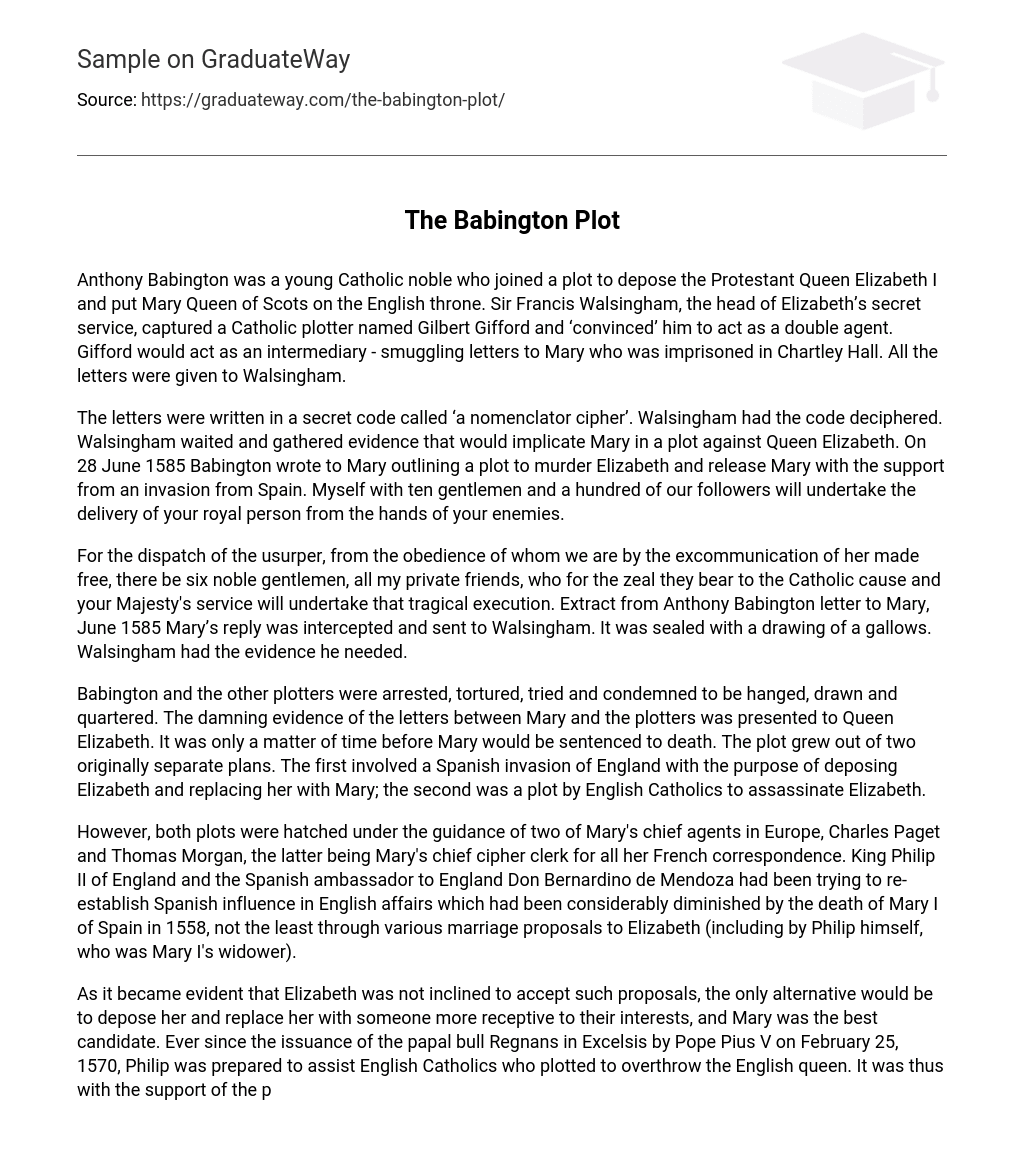Anthony Babington, a young Catholic noble, conspired to remove Queen Elizabeth I from the throne and replace her with Mary Queen of Scots. To thwart this plot, Sir Francis Walsingham, the head of Elizabeth’s secret service, caught Gilbert Gifford, a Catholic conspirator, and convinced him to become a double agent. Gifford served as a intermediary by clandestinely delivering letters to Mary, who was held captive at Chartley Hall. Ultimately, all the letters were handed over to Walsingham.
The letters were written in a secret code known as ‘a nomenclator cipher’. Walsingham decoded the code and proceeded to collect evidence that would implicate Mary in a plot against Queen Elizabeth. On June 28, 1585, Babington sent a letter to Mary detailing a plan to assassinate Elizabeth and help Mary escape with assistance from a Spanish invasion. “Myself with ten gentlemen and a hundred of our followers will undertake the delivery of your royal person from the hands of your enemies.”
Among my private friends, there are six noble gentlemen who are willing to undertake the execution of the usurper, freeing us from her control due to her excommunication. They are driven by their zeal for the Catholic cause and loyalty to your Majesty. This information is taken from a letter written by Anthony Babington to Mary in June 1585. However, Mary’s response was intercepted and sent to Walsingham, who now has the evidence he required. The letter was sealed with a drawing of a gallows.
Babington and the other plotters were apprehended, subjected to torture, put through trial, and sentenced to hanging, drawing, and quartering. The incriminating letters exchanged between Mary and the plotters were presented to Queen Elizabeth. Mary’s fate of being condemned to death was merely a question of time. The conspiracy emerged from two initially distinct schemes. One centered around a Spanish incursion into England aimed at overthrowing Elizabeth and installing Mary as the new ruler, whereas the other involved English Catholic conspirators plotting to assassinate Elizabeth.
Both plots were planned by two of Mary’s main agents in Europe, Charles Paget and Thomas Morgan. Morgan was Mary’s chief cipher clerk for all her French correspondence. King Philip II of England and the Spanish ambassador to England, Don Bernardino de Mendoza, had been attempting to regain Spanish influence in English affairs, which had declined after the death of Mary I of Spain in 1558. This was evident through numerous marriage proposals to Elizabeth, including one from Philip himself, who was Mary I’s widower.
Elizabeth’s refusal to accept certain proposals left no choice but to remove her from power and replace her with someone more favorable to their interests. Mary was considered the ideal candidate for this. Pope Pius V’s issuance of the papal bull Regnans in Excelsis on February 25, 1570, paved the way for Philip to provide assistance to English Catholics planning to overthrow Queen Elizabeth. Therefore, with the backing of the papacy and Spain, Morgan and Paget endeavored to identify individuals in England willing to support this objective.





